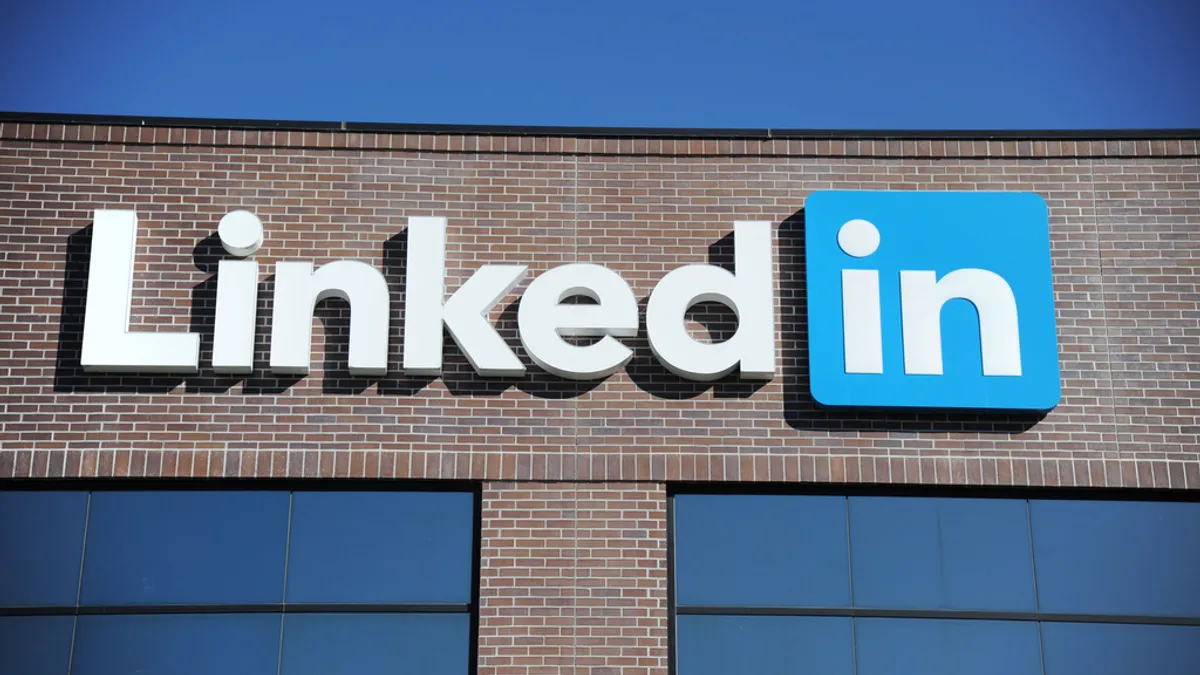The e-learning market is booming. An estimated $165 billion was spent on the industry in the U.S. in 2015, and growth is projected to hit $240 billion by 2023. In essence: there’s no end in sight for growth in e-learning.
As tech giants Google and Facebook have elbowed into the job board space, LinkedIn has expanded into e-learning by jumping into the online training market. Its goal was to take the guesswork out of learning for business by considering how jobs, industries, organizations and skills evolve over time.
"Lifelong learning is becoming an economic imperative," Kevin Simon, head of product, LinkedIn Learning, told HR Dive; "And with 3 billion people in the global workforce, LinkedIn has long felt its mission to create opportunity for every one of them."
Using data from more than 500 million member profiles and billions of engagements, LinkedIn combines content from recently acquired Lynda.com (purchased in 2015) with its extensive network to suss out who needs which skills and guide them to proper learning material. Simon said that effort is “based on emerging skills that we know are in demand and based on what feedback we’re hearing from our customers.”
LinkedIn leverages data to understand what functions are growing, what skills are being added to profiles, and what skills are required in jobs posted. And the market is growing across all categories.
E-learning explosion
Microlearning is on the rise, at least in part because skills must be continuously updated. According to research by Deloitte, employees can devote about 25 minutes a week (less than 5 minutes per day) to training in a 40 hour workweek. The microlearning trend – short bursts of applicable information on demand – makes training focus on what is necessary. LinkedIn Learning, for both enterprise and consumer learners, began to add content recommendations at the end of last year that are personalized to the learner and bite-sized for quick daily learning.
Video learning is expected to dominate the internet in the coming years; by 2019, it’s expected to be 80% of the world’s internet traffic. In 2016, 98% of companies predicted they would use video as part of their digital learning strategy. By 2019 its estimated that 50% of all classes will be delivered online.
LinkedIn believes the shelf-life of skills is less than five years, as many of the skills needed today are for categories of jobs that didn’t even exist five years ago. Employers and workers know learning is not a one-and-done undertaking. Skills need to be continuously upgraded easily and meaningfully.
Over 67% of organizations offer some form of mobile learning; 99% of users believe mobile learning enhances their educational experience. The mobile learning market is predicted to top $37 billion by 2020.
Based on need
LinkedIn says it built LinkedIn Learning on three core values: content, data-driven personalization and accessibility. A number of competitors and partners in the field are following suit.
In November 2017, LinkedIn announced its LinkedIn Learning’s Integration Partner Program to allow businesses to access content directly from their LMS. Automatic course integration lets learners search through their own employers' systems for relevant content, which is continuously updated. For L&D managers, progress is communicated directly to the LMS to understand learner activity, engagement and statistics.
Elliot Golden, product manager of CloudSuite Corporate and LMS at Infor, told HR Dive the company needs content that is current, well-structured, and insightful — something it found with Lynda. Corina Kolbe, director of learning & development at Zillow Group believes robust learning solutions can foster a culture of learning, as LinkedIn Learning has done for them. "At Zillow Group, career development is more than just your next job — it's about developing the skills for your current role, your next role, and the connections and experiences you're having," Golden said.
More LMS solutions are angling to allow employers to more seamlessly connect learning with culture. L&D professionals can expect more innovation in that realm in the coming year.
What’s on the horizon?
Simon said LinkedIn also has launched a new monthly notification that shares relevant trending skills among people with the same job title. They’re also testing a number of different ways to get employees to really embrace learning. An initiatives that allows workers to "learn-in-flight," for example, will give travelers the ability to leverage the time they have in the air to learn new skills.
“Learning is what will propel people into future careers and opportunities," Simon said, "and LinkedIn is in a unique position to completely change how professionals acquire the skills they need to advance their careers."





















